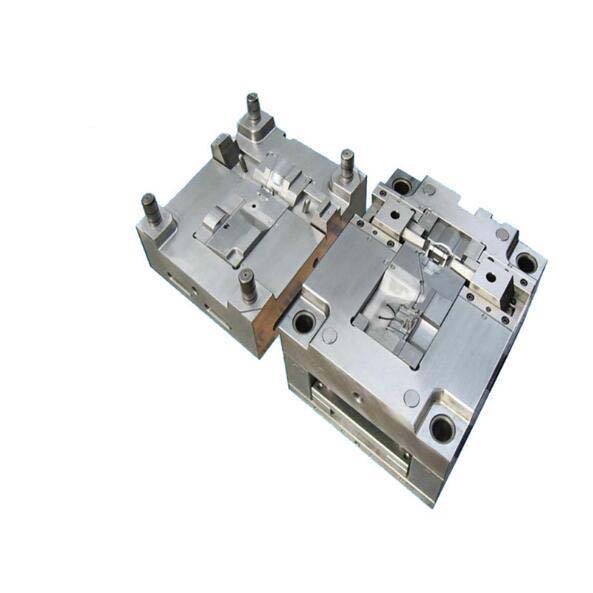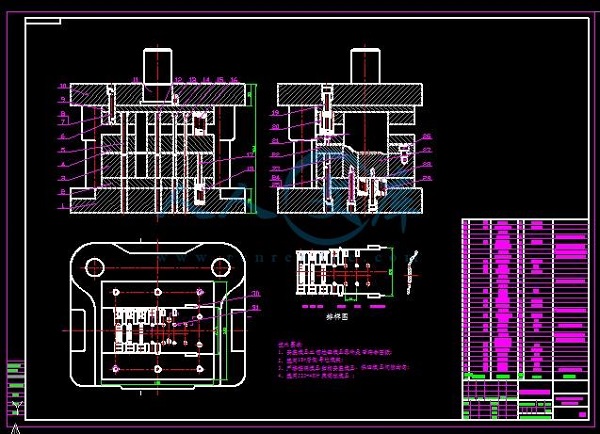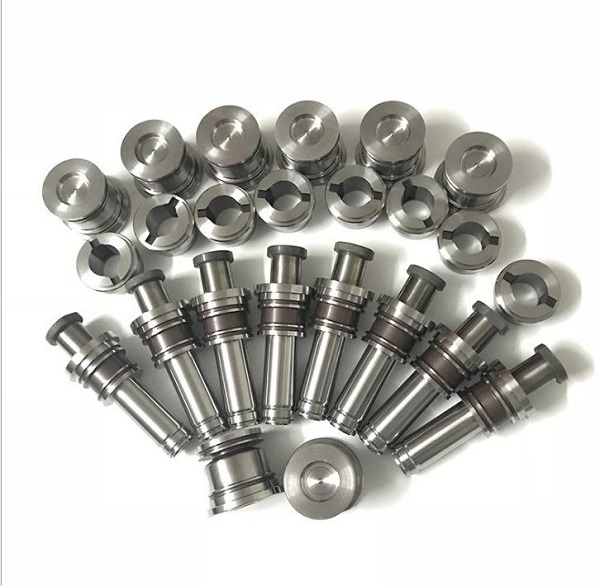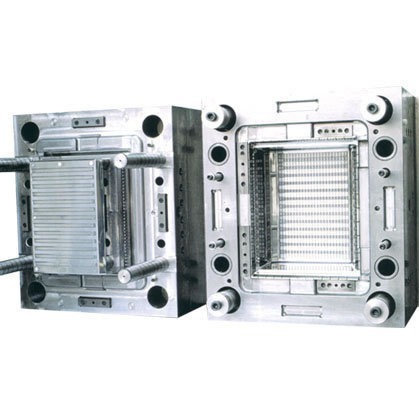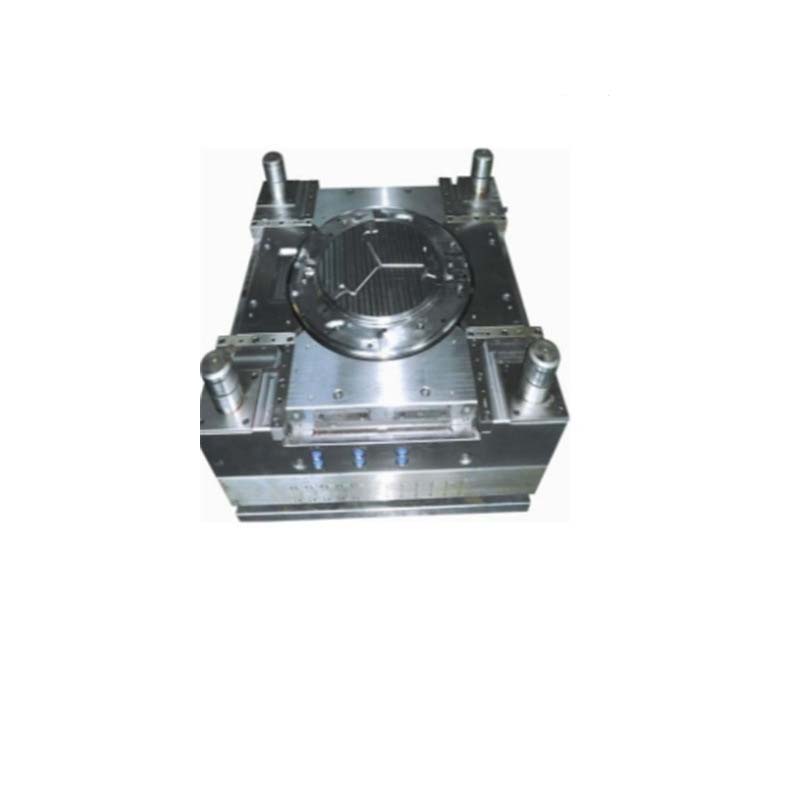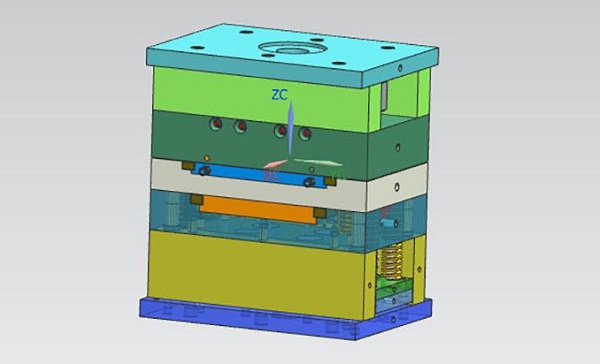What is Plastic Injection Mold Fabrication?
Plastic injection mold fabrication is a specialized manufacturing process that plays a pivotal role in the production of a vast array of plastic products we encounter in our daily lives. At its core, it involves the creation of a mold, which is a precisely engineered tool used to shape molten plastic into a desired form. This process is widely employed across multiple industries, from automotive and electronics to consumer goods and medical devices.
The importance of plastic injection mold fabrication in the manufacturing sector cannot be overstated. It offers several key advantages. Firstly, it enables high - volume production with remarkable precision. For instance, in the automotive industry, parts such as interior trims, dashboard components, and even some engine parts made of plastic are produced using injection molds. These molds can produce thousands or even millions of identical parts with tight tolerances, ensuring consistency in quality.
Secondly, it is cost - effective for large - scale production. Once the initial investment in mold design and fabrication is made, the cost per unit for producing plastic parts is relatively low. This is because the injection molding process is highly automated, reducing labor costs and increasing production efficiency.
Moreover, plastic injection mold fabrication allows for the creation of complex shapes that would be extremely difficult or costly to achieve through other manufacturing methods. For example, in the production of small, intricate electronic components like connectors, the injection mold can accurately replicate the fine details and internal structures required for proper functionality.
Key Components of a Plastic Injection Mold
A plastic injection mold is composed of several key components, each playing a crucial role in the injection molding process.
Mold Base
The mold base is the foundation of the plastic injection mold, providing structural support and housing for all other components. It typically consists of two main parts: the fixed mold plate (also known as the Fixed mold base plate) and the moving mold plate (Moving mold seat plate).
- The fixed mold plate is attached to the stationary platen of the injection molding machine. Its primary function is to hold the cavity and other components in place during the injection process. It ensures that the mold remains stable when high - pressure molten plastic is injected. For example, in a large - scale production of plastic buckets, the fixed mold plate must be robust enough to withstand the injection pressure without any deformation.
- The moving mold plate is connected to the movable platen of the machine. It moves during the opening and closing of the mold. When the mold opens, the moving mold plate moves away from the fixed mold plate, allowing the ejection of the finished plastic part. In a mold for manufacturing small plastic toys, the smooth movement of the moving mold plate is essential for the efficient removal of the molded toys.
Cavity and Core
The cavity and core are the most critical components for determining the shape of the plastic product.
- The cavity is the hollow, female - shaped part of the mold. It forms the outer surface of the plastic product. For instance, when making a plastic bottle, the cavity has the exact shape of the outer body of the bottle, including any curves, ridges, or markings on the bottle's surface.
- The core, on the other hand, is the male - shaped part. It determines the internal features of the product, such as the hollow space inside a plastic pipe or the internal threads of a plastic fitting. In the case of a plastic container with a lid, the core would shape the inner part of the lid where it screws onto the container. The precise alignment and fit between the cavity and core are crucial to ensure the dimensional accuracy of the plastic product.
Gating System
The gating system is responsible for controlling the flow of molten plastic into the mold cavity. It consists of the sprue, runner, and gate.
- The sprue is the main channel through which the molten plastic enters the mold from the injection machine nozzle. It is usually a large - diameter passage that allows a high - volume flow of plastic initially. For example, in a mold for making large plastic furniture parts, the sprue needs to be wide enough to quickly deliver a large amount of molten plastic.
- The runner is a network of smaller channels that distribute the plastic from the sprue to the individual cavities (in the case of multi - cavity molds) or different parts of a single - cavity mold. Runners can be designed in various shapes, such as circular or trapezoidal, to optimize the flow of plastic.
- The gate is the narrowest part of the gating system, connecting the runner to the cavity. It controls the rate and direction of plastic flow into the cavity. Different types of gates, such as side gates, point gates, or film gates, are used depending on the product's shape, size, and quality requirements. For a thin - walled plastic component, a point gate might be used to precisely control the flow and prevent over - filling or jetting of the plastic.
Cooling System
The cooling system is vital for the plastic injection molding process as it affects both the quality and production efficiency.
- During the injection molding process, the molten plastic fills the mold cavity at a high temperature. The cooling system, which typically consists of channels through which a coolant (usually water) flows, is used to remove the heat from the mold. This causes the plastic to solidify and take the shape of the mold.
- If the cooling is not uniform, the plastic part may experience uneven shrinkage, leading to warping, distortion, or internal stresses. For example, in the production of plastic automotive interior panels, non - uniform cooling could result in panels that do not fit properly during assembly. Additionally, an efficient cooling system can significantly reduce the cycle time of the injection molding process. By quickly cooling the plastic, the mold can be opened sooner, and the next part can be produced, increasing overall production output.
The Plastic Injection Mold Fabrication Process
The fabrication process of a plastic injection mold is a multi - step procedure that requires precision, advanced technology, and a deep understanding of materials and manufacturing processes.
Design Phase
The design phase is the foundation of plastic injection mold fabrication. It is where the blueprint for the entire mold is created, and it has a significant impact on the final product's quality, production efficiency, and cost - effectiveness.
- CAD/CAM Software Utilization: Computer - Aided Design (CAD) and Computer - Aided Manufacturing (CAM) software play a crucial role in this stage. Designers use CAD software to create a 3D model of the mold with extreme precision. For example, in the design of a mold for a complex automotive interior component, CAD software allows designers to accurately define the shape, dimensions, and tolerances of the mold cavity and core. This 3D model serves as a virtual prototype, enabling designers to visualize the mold and make any necessary adjustments before moving to the manufacturing stage.
- Consideration of Manufacturability and Maintainability: Designers must also consider the mold's manufacturability. This means taking into account factors such as the availability of materials, the capabilities of the manufacturing equipment, and the complexity of the machining processes. For instance, if a mold has extremely intricate features that are difficult to machine using standard CNC (Computer Numerical Control) equipment, the design may need to be modified. Additionally, the maintainability of the mold is important. Designers should design the mold in a way that makes it easy to disassemble, clean, and repair. This may involve using modular components or designing accessible channels for maintenance purposes.
Material Selection
The choice of material for a plastic injection mold is critical as it affects the mold's performance, durability, and cost.
- Commonly Used Materials: Steel is one of the most frequently used materials for plastic injection molds. There are different types of steel, each with its own set of properties. For example, P20 steel is a pre - hardened steel that offers good machinability and a relatively high level of hardness, making it suitable for a wide range of applications, such as molds for consumer goods like plastic toys. H13 steel, on the other hand, is a hot - work tool steel with excellent heat resistance and toughness. It is often used in molds for high - temperature applications, such as when molding engineering plastics that require high injection temperatures.
- Material Selection Criteria: When selecting a material, several factors need to be considered. The first is the expected number of production cycles. If a mold is intended for high - volume production, a more durable and wear - resistant material like hardened steel may be chosen. The complexity of the mold design also matters. For molds with intricate details, a material with good machinability, such as aluminum - alloyed steel, may be preferred as it can be more easily shaped into the required form. Additionally, the cost of the material is a significant factor. While high - performance materials offer better properties, they also come at a higher cost. Therefore, a balance needs to be struck between performance and cost, especially for projects with budget constraints.
Machining Processes
The machining processes involved in plastic injection mold fabrication are diverse and require high - precision equipment and skilled operators.
- CNC Machining: CNC machining is a fundamental process in mold making. It uses computer - controlled machines to remove material from a workpiece, creating the desired shape of the mold components. In the production of a mold base, CNC milling machines can be used to precisely mill the flat surfaces, drill holes for bolts and other fasteners, and create channels for the cooling system. CNC turning machines are used for machining cylindrical parts, such as the cores and some components of the gating system. The advantage of CNC machining is its high precision, which can achieve tight tolerances, often within a few micrometers. This level of precision is crucial for ensuring the proper fit and function of the mold components.
- Electrical Discharge Machining (EDM): EDM is another important process, especially for creating complex shapes and features that are difficult to machine using traditional methods. EDM works by using electrical discharges to erode the material from the workpiece. For example, in a mold for a plastic connector with small, intricate internal features, EDM can be used to create these features with high accuracy. There are two main types of EDM: die - sinking EDM and wire - EDM. Die - sinking EDM is used to create cavities by using a shaped electrode, while wire - EDM is used to cut precise profiles in the workpiece by using a thin wire as an electrode.
Assembly and Testing
After the individual mold components are machined, they need to be assembled and thoroughly tested to ensure the mold's quality and performance.
- Assembly Process: The assembly of a plastic injection mold is a meticulous process. First, the mold base components are assembled, ensuring that the fixed and moving mold plates are properly aligned and fastened together. Then, the cavity and core components are inserted into the mold base, and their alignment is carefully checked. The gating system components, including the sprue, runner, and gates, are installed and connected to ensure smooth plastic flow. The cooling system pipes are also connected, and leak - testing is performed to ensure there are no coolant leaks. All components are tightened to the appropriate torque specifications to prevent any movement during the injection molding process.
- Testing Procedures: Once assembled, the mold undergoes several tests. A dimensional inspection is carried out using precision measuring instruments such as coordinate measuring machines (CMMs) to ensure that all components are within the specified tolerances. The mold is then installed on an injection molding machine for a trial run. During the trial run, the mold is cycled through multiple injection - molding cycles, and the quality of the produced plastic parts is closely monitored. Parameters such as the fill time, injection pressure, and cooling time are recorded and analyzed. Any defects in the plastic parts, such as flash (excess plastic), short shots (incomplete filling), or warping, are carefully examined, and adjustments are made to the mold or the injection - molding process parameters as needed. This testing and adjustment process continues until the mold consistently produces high - quality plastic parts that meet the required specifications.
Yigu Technology's Perspective
As a non - standard plastic metal products custom Supplier, Yigu Technology brings a wealth of experience and unique advantages to plastic injection mold fabrication.
Our advanced equipment is at the forefront of the industry. We are equipped with state - of - the - art CNC machining centers that can achieve micron - level precision, ensuring that every mold component is machined to the exact specifications. For example, our high - speed CNC milling machines can rapidly and accurately create complex shapes on mold bases and cavities, reducing machining time without sacrificing quality. In addition, we have a full - set of EDM equipment, including high - precision wire - EDM machines, which are crucial for producing intricate mold features.
Our professional team is another pillar of our success. Composed of experienced engineers and skilled technicians, our team has in - depth knowledge of plastic injection mold design and fabrication. Our engineers are proficient in using the latest CAD/CAM software, and they can optimize mold designs according to different product requirements. They consider factors such as material flow, cooling efficiency, and mold lifespan during the design phase. Our technicians, on the other hand, have years of hands - on experience in operating the equipment, ensuring that the manufacturing process is smooth and error - free.
Yigu Technology is committed to providing high - quality custom services. We work closely with clients from the initial design concept to the final product delivery. We listen attentively to clients' needs, offer professional advice on material selection, mold structure optimization, and production process improvement. Whether it's a small - batch production for a new product prototype or a large - scale production for mass - market products, we have the capabilities to meet clients' demands with the highest quality standards.
FAQs about Plastic Injection Mold
What are the common materials used for plastic injection molds?
Common materials for plastic injection molds include various types of steel. P20 steel, a pre - hardened steel with a carbon content around 0.35 - 0.45%, offers good machinability and a hardness of about 28 - 33 HRC. It is suitable for a wide range of applications, such as molds for consumer goods like plastic toys and simple household items due to its relatively low cost and decent overall performance. 718 steel, an upgraded version of P20 with better properties, has a hardness of 35 - 40 HRC. It is often used in molds for more complex plastic parts that require higher precision, such as components for small electronic devices. NAK80 is a pre - hardened high - grade plastic mold steel with a hardness of 40 - 42 HRC. It has excellent mirror - polishing properties, making it ideal for molds used to produce high - gloss products like cosmetic packaging and optical components.
How can I ensure the quality of a plastic injection mold?
To ensure the quality of a plastic injection mold, several steps can be taken. First, select the appropriate materials based on the product requirements. High - quality materials can enhance the mold's durability and performance. For example, if the product requires high precision and long - term use, a more wear - resistant and dimensionally stable steel like 718H should be chosen. Second, accurate design is crucial. Use advanced CAD/CAM software to design the mold, considering factors like material flow, cooling efficiency, and part ejection. A well - designed mold can prevent issues such as warping and incomplete filling. Third, strict processing procedures must be followed. High - precision machining equipment, such as CNC machines and EDM machines, should be used to ensure that the mold components are fabricated to the exact specifications. Finally, comprehensive testing, including dimensional inspection and trial runs on an injection molding machine, should be carried out to identify and rectify any potential problems before mass production.
What is the typical lead time for plastic injection mold fabrication?
The typical lead time for plastic injection mold fabrication usually ranges from 15 to 45 days. However, this can vary significantly depending on several factors. For simple molds with a relatively small size and basic design, the lead time may be on the lower end, around 15 - 20 days. In contrast, complex molds with intricate features, multiple cavities, or large dimensions can take 30 - 45 days or even longer. The order quantity also plays a role. If it is a large - scale order with multiple molds required, the production time will be extended as the manufacturer needs to allocate sufficient resources and production capacity. Additionally, factors such as the availability of raw materials and the workload of the manufacturing facility can also impact the lead time.
